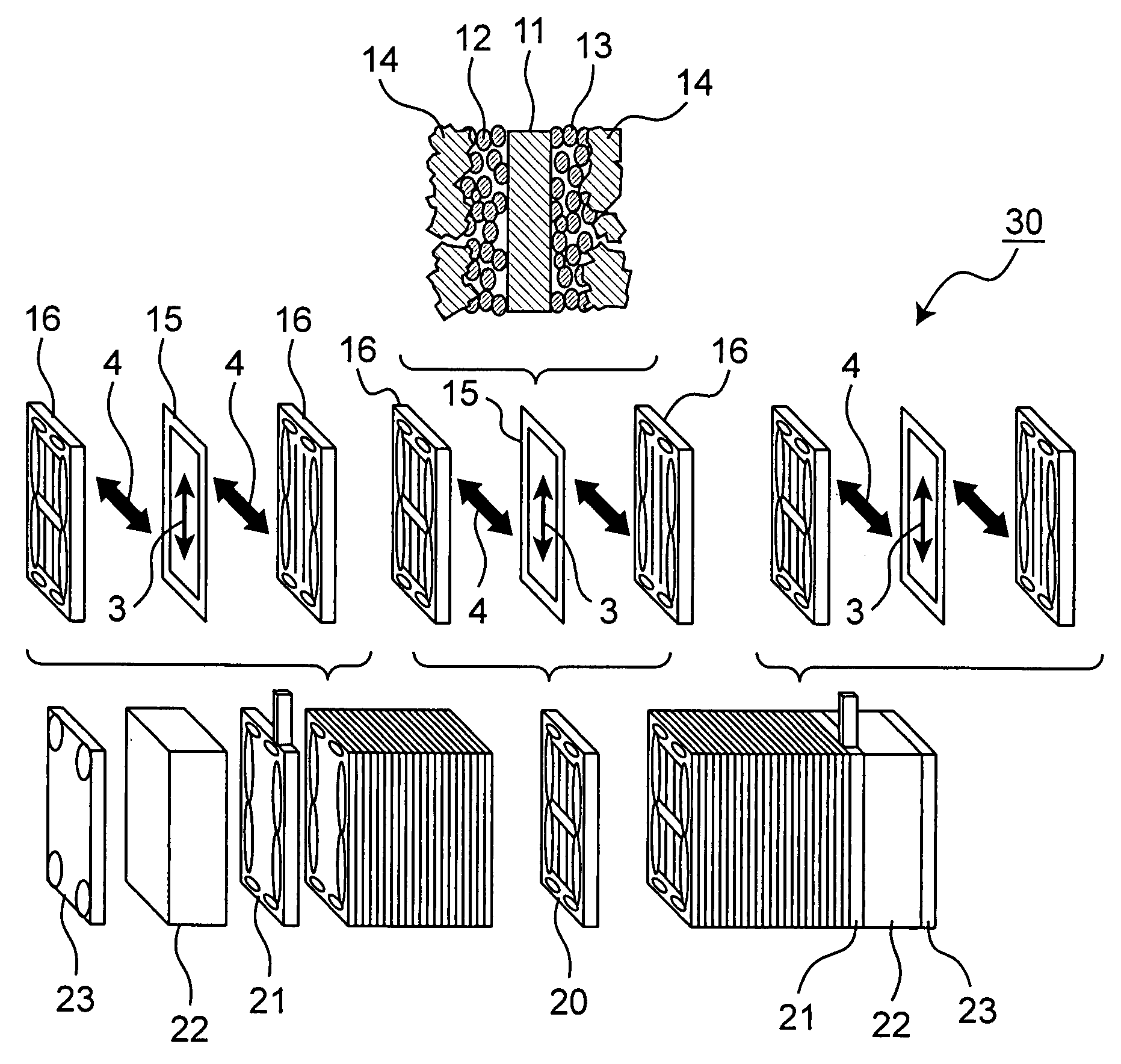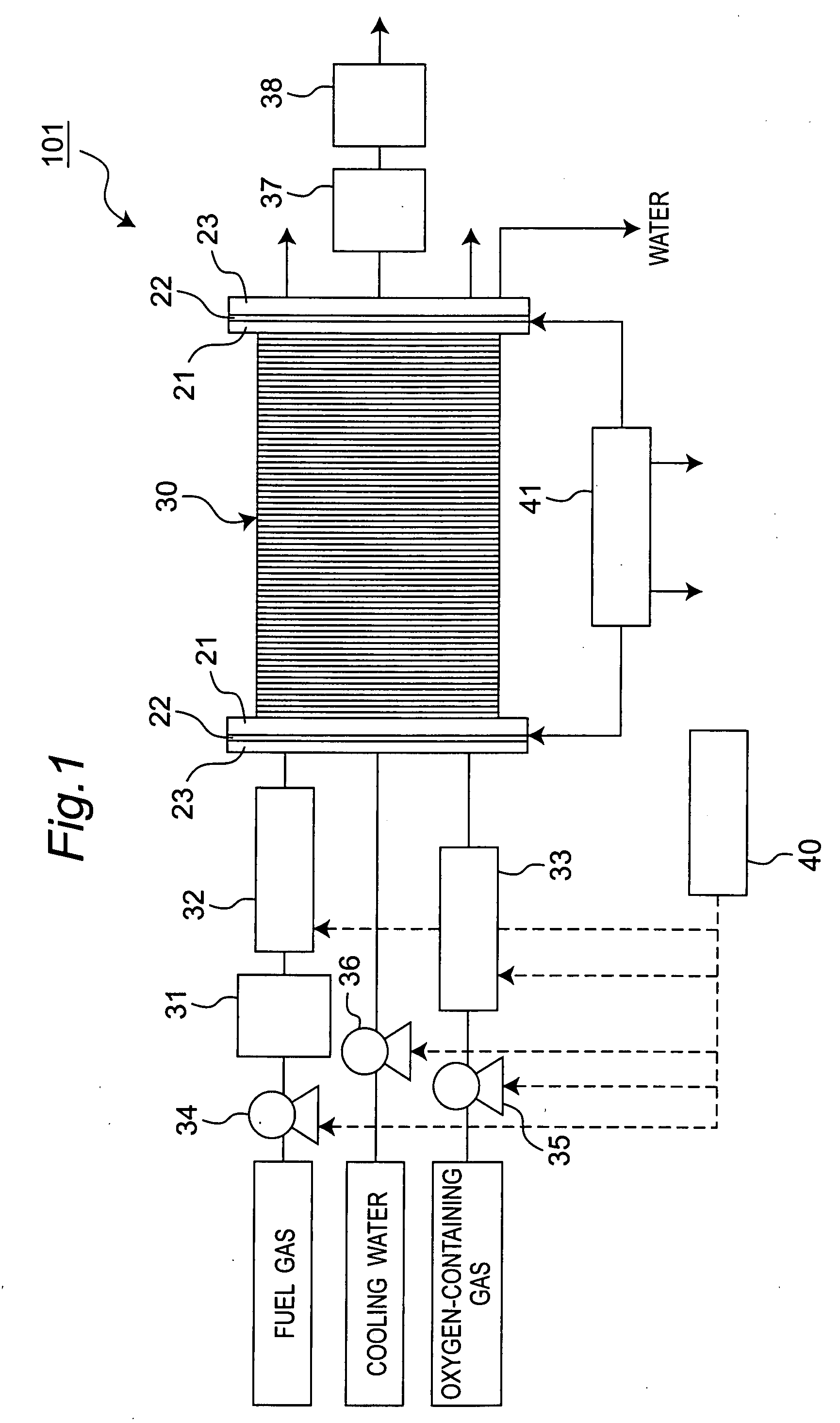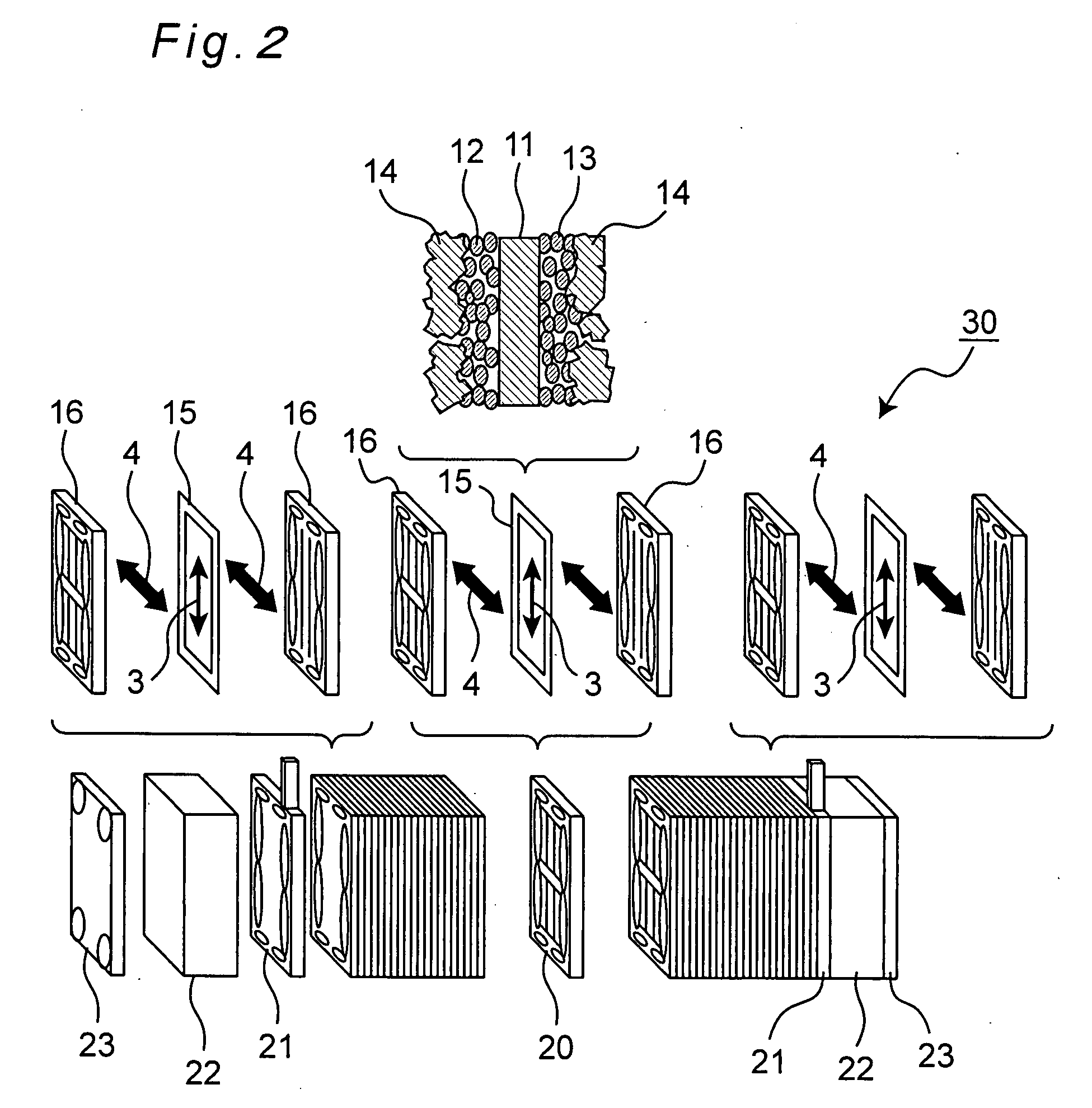Fuel-Cell Stack And Fuel Cell
- Summary
- Abstract
- Description
- Claims
- Application Information
AI Technical Summary
Benefits of technology
Problems solved by technology
Method used
Image
Examples
example 1
[0087]First, a method for fabricating an MEA included in a fuel-cell stack according to Example 1 of the invention is explained. Both sides of a polyelectrolyte membrane (Nafion 112 made by DuPont) were coated with a catalyst in which platinum was carried on acetylene black powder, by which a catalytic layer was formed. Further on outer surfaces of the catalytic layer, a gas diffusion layer formed with a base material of carbon fiber woven cloth was placed. The carbon fiber woven cloth was of plain weave, and GDL-1 (gas-diffusion-layer base material-1) shown in Table 2 was used therefor.
[0088]It is noted that Table 2 shows characteristic data on elongations of two kinds of gas-diffusion-layer base materials, GDL-1 and GDL-2, of different characteristics. An elongation (%) is expressed in value from a calculation that a displacement amount of carbon fiber woven cloth at a load 10N resulting from application of a tensile load to a 25 mm wide carbon fiber woven cloth with a chuck-to-ch...
example 2
[0097]Next, a fuel-cell stack according to Example 2 is described. An MEA and a separator were fabricated in the same manner as in Example 1, and a unit cell was fabricated in such a placement that the placement direction of warp of the carbon fiber woven cloth GDL-1 shown in Table 2 would be perpendicular to the primary direction of the gas flow passages of the separator. As in Example 1, this unit cell was stacked to a quantity of 50 cells, and a stainless current-collector plate, an insulating plate made of an electrical insulating material and an end plate were placed on each of the two end portions, all of these members being fixed by a tightening rod, by which a fuel-cell stack was fabricated. That is, in Example 2, a stack in which the gas-diffusion-layer base material (GDL-1) was so placed that elongation variations with respect to the direction perpendicular to the primary direction of the gas flow passages would fall within ±18% as shown in Table 2 was fabricated.
[0098]A p...
example 3
[0099]Next, a fuel-cell stack according to Example 3 is described. An MEA and a separator were fabricated in the same manner as in Example 1, and a unit cell was fabricated in such a placement that the placement direction of warp of the carbon fiber woven cloth GDL-2 shown in Table 2 would be parallel to the primary direction of the gas flow passages of the separator.
[0100]As in Example 1, this unit cell was stacked to a quantity of 50 cells, and a stainless current-collector plate, an insulating plate made of an electrical insulating material and an end plate were placed on each of the two end portions, all of these members being fixed by a tightening rod, by which a fuel-cell stack was fabricated. That is, in Example 2, a stack in which the gas-diffusion-layer base material (GDL-2) was so placed that elongation variations with respect to the direction perpendicular to the primary direction of the gas flow passages would fall within ±20% as shown in Table 2 was fabricated.
[0101]A p...
PUM
 Login to View More
Login to View More Abstract
Description
Claims
Application Information
 Login to View More
Login to View More - R&D
- Intellectual Property
- Life Sciences
- Materials
- Tech Scout
- Unparalleled Data Quality
- Higher Quality Content
- 60% Fewer Hallucinations
Browse by: Latest US Patents, China's latest patents, Technical Efficacy Thesaurus, Application Domain, Technology Topic, Popular Technical Reports.
© 2025 PatSnap. All rights reserved.Legal|Privacy policy|Modern Slavery Act Transparency Statement|Sitemap|About US| Contact US: help@patsnap.com



